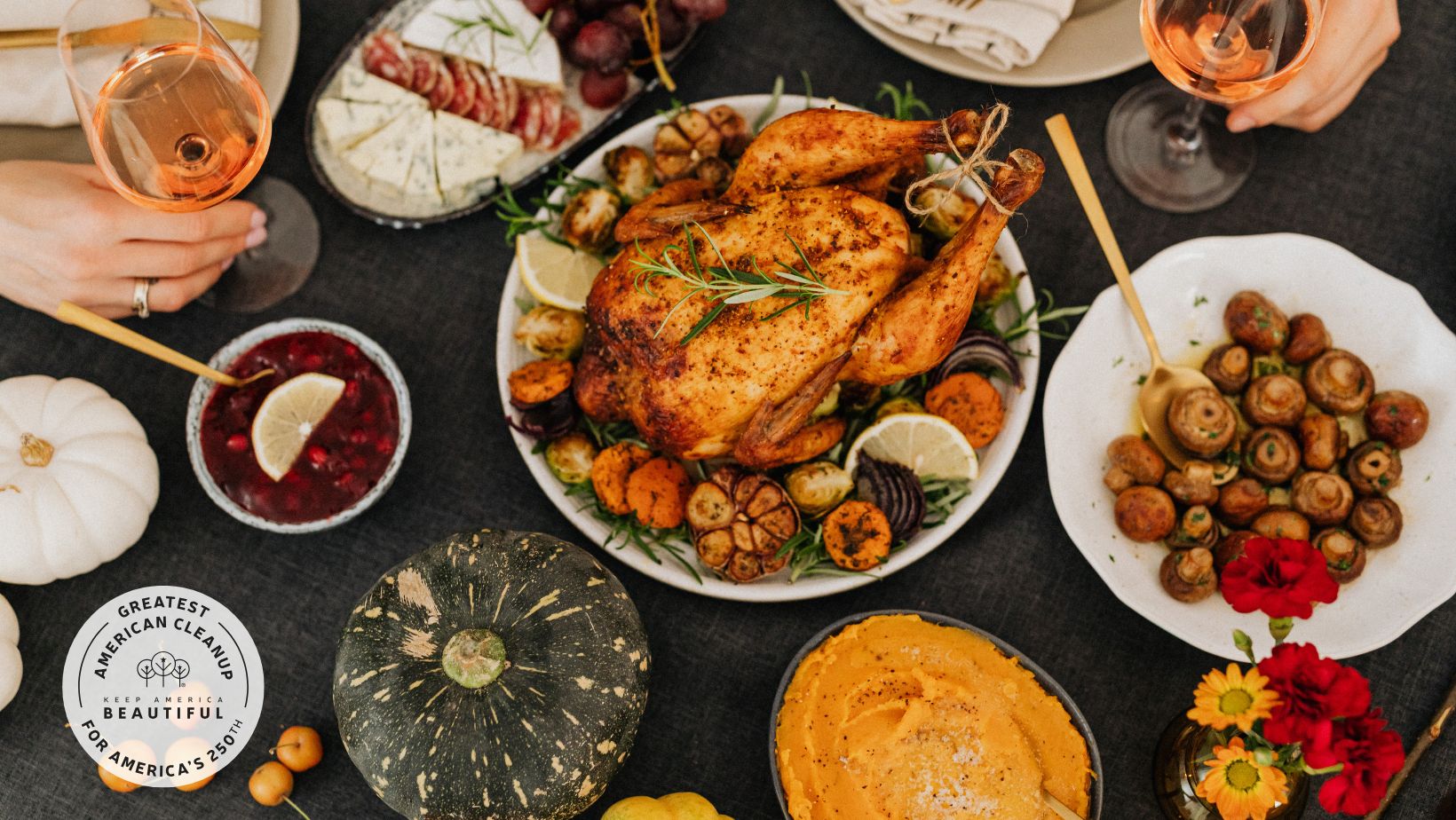Give Thanks, Not Waste: Simple Ways to Celebrate a More Sustainable Thanksgiving
Thanksgiving is one of America’s most cherished holidays—a time to gather with family and friends, share a delicious meal, and express gratitude for all we have.
But amid the joy and abundance, it’s easy for the holiday to become a little too abundant. Studies show Americans generate about 25% more waste between Thanksgiving and New Year’s—and much of that comes from uneaten food. In fact, it’s estimated that we toss out around 200 million pounds of turkey during Thanksgiving week alone!
This year, let’s make Thanksgiving not only a time to be thankful—but also thoughtful. Here are seven simple ways to host a more sustainable celebration that’s every bit as joyful (and delicious).
1. Cut Down on Food Waste by Planning Ahead
While everyone loves leftovers, too much extra food often ends up in the trash. Spend a little time planning your menu and coordinating dishes with guests so you don’t double up. Encourage everyone to bring reusable containers for leftovers—it’s a simple way to reduce waste and share the feast.
You can also get creative with ingredients. Use recipes that complement one another so nothing goes to waste. If one dish calls for 1½ cups of broth, find another that uses the remaining ½ cup. Small changes add up to a big difference.
2. Shop Local and Seasonal
Shopping locally supports nearby farmers and reduces the environmental impact of long-distance shipping. Visit a farmers’ market for your produce or check if local farms offer fresh turkeys and deliveries. Local ingredients often taste better, too—harvested fresh and full of flavor.
When you head to the store, bring reusable bags and skip plastic produce bags whenever possible. Every small choice helps reduce waste.
3. Make Cleanup Eco-Friendly
Set your table with reusable dishes and cloth napkins, and avoid disposable items like paper towels. Make recycling easy for guests by labeling bins clearly—and don’t forget that aluminum turkey trays are recyclable!
Thanksgiving is also a great time to start composting. Potato peels, veggie scraps, and even old bread can all go into the compost bin (just skip anything with meat or dairy). You might even grow next year’s pumpkin patch from this year’s leftovers!
4. Add More Plant-Based Dishes
You don’t have to skip the turkey, but you can lighten your meal’s footprint by adding more plant-based options. Try using olive oil instead of butter, vegetable broth instead of chicken broth, or coconut milk in mashed potatoes.
And invite your vegetarian or vegan guests to bring their favorite dishes—you might discover a new family favorite that becomes part of your holiday tradition.
5. Decorate Naturally
Skip the store-bought plastic décor and opt for natural beauty instead. Gather colorful leaves, pinecones, gourds, and pumpkins for your table centerpiece. They’ll look festive, smell amazing, and can be composted or reused afterward.
For a fun family activity, try DIY crafts using upcycled materials. It’s a great way to get creative and celebrate the season sustainably.
6. Travel Smart
If you’re traveling for Thanksgiving, consider lower-impact options like trains or buses, or carpool with family and friends. Traveling on off-peak days can save both gas and stress.
Or create a new local tradition—invite neighbors or friends who may not be traveling, and keep the celebration closer to home.
7. Give Back to Your Community
Thanksgiving is rooted in gratitude and community. You can honor that spirit by donating to a food bank, volunteering at a local shelter, or lending a hand to neighbors in need.
Giving Tuesday, the Tuesday after Thanksgiving, is a wonderful opportunity to give back. Consider volunteering with a Keep America Beautiful affiliate near you or supporting efforts to create clean, green, and sustainable communities by making a donation. Every contribution helps make a difference!
Join the Movement for a Cleaner, More Beautiful America
As we look ahead to America’s 250th birthday in 2026, Keep America Beautiful invites you to take part in the Greatest American Cleanup—a nationwide movement to create cleaner, greener, and more beautiful communities for generations to come.
Pledge to join this movement today at kab.org/greatest.
Together, we can make gratitude go even further—building communities that are as beautiful as the spirit of Thanksgiving itself.
About Keep America Beautiful®:
Keep America Beautiful, the nation’s leading community improvement nonprofit organization, inspires and educates people to take action every day to improve and beautify their community environment. Established in 1953, Keep America Beautiful strives to end littering, improve recycling, and beautify America’s communities. Join us on Facebook, Instagram, X, LinkedIn, and YouTube. Donate and take action at kab.org.
MEDIA CONTACTS:
McCall Vrydaghs
Keep America Beautiful®

